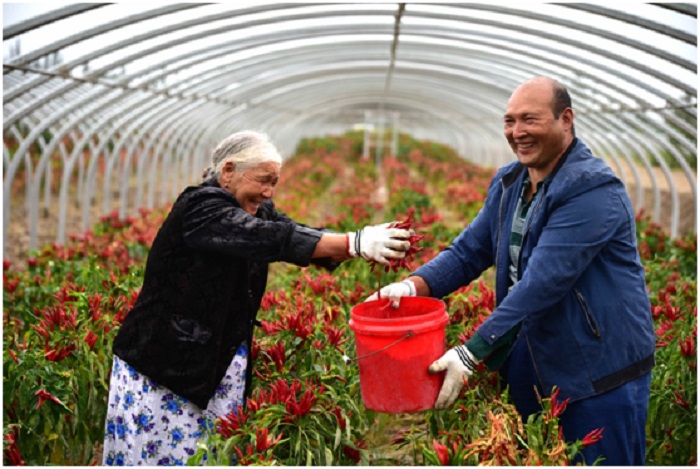



Though people from all walks of life expect to know a story exactly how it unfolds, many media outlets are failing them in learning the full truth. People expect the media to remain objective while running news, be it positive or negative, going beyond any sort of partiality and bias.
However, the media have a long history of deviating from the canons and principles of journalism, leading to the development of terms like yellow journalism, tabloid journalism, and checkbook journalism over the years. In the age of globalization, they appear to have broken all records of partiality in disseminating news.
In this case, Xinjiang is an unambiguous example of how the media is obsessed with negative stories, be it true or false, of a specific region to serve the interests of the parties they have aligned themselves with. In doing so, the media can’t even make time to look at pieces of positive news regularly unfolding in Xinjiang under their very nose.
Many media are constantly producing negative news about Xinjiang. Never have they told the world that the region is achieving tremendous successes in all sectors including economic, social, environmental, and security, seemingly reluctant to give coverage of the outstanding achievements of the Chinese government in Xinjiang.
As is typical, the news of the eradication of abject poverty in Xinjiang has lately failed to draw the media’s attention. Though they would undoubtedly have “talked up” the news if it had happened in any other country except for China. Thanks to alternative media, especially social media platforms, the success stories of Xinjiang in poverty eradication is now on everyone’s tongue.
The world has already learned that Xinjiang has bidden farewell to absolute poverty. The last 10 impoverished counties, including Shache, Moyu and Akto, in the autonomous region have managed to end abject poverty. People in the once-poverty-hit counties now have stable access to education, medical care, and other civil amenities. Following the poverty eradication from the last counties, more than 3.08 million registered impoverished residents in Xinjiang have shaken off absolute poverty.
It was not an easy task to eradicate abject poverty from the region. Though Xinjiang has beautiful scenery and abundant resources, it had a relatively backward economy. Its southern part has long been one of the contiguous poverty-stricken areas in China, but the tremendous and outstanding historic feats are attributed to the Communist Party of China (CPC). The party has undertaken a series of major decisions and arrangements that have put Xinjiang in a special position to ensure its steady and sound economic development over time.
The CPC has initiated the new philosophy of innovative, coordinated, green, and open development for the benefit of all, bringing about a historic change in the overall development of Xinjiang. Under the philosophy, top priority is being given to the needs of the people, allocating over 70 percent of the regional budget expenditure for ensuring and improving people’s livelihood in recent years. For the same reason, the party has also promoted major livelihood programs relating to employment, education, healthcare, and social security.
The Xinjiang government has mobilized more than 1.12 million civil servants to establish kin-like relations with 1.69 million households of those in poverty. The civil servants have conducted “relative-visit week” activities regularly, in which they have wholeheartedly and effectively helped people solve difficulties in production and life.
As a result, from 2014 to 2019, a sound economic momentum was sustained with an average annual GDP growth rate of 7.2 percent in Xinjiang. The living standards of local people have significantly improved with an average annual growth of 9.1 percent in residential per capita disposable income. During this period, affordable housing projects in rural areas had assisted over 675,600 impoverished households, putting an end to the time when poverty-stricken rural residents had to live in dilapidated houses.
I have picked Xinjiang to illustrate China’s decade-long fight against poverty. The same holds true for every region and province of the country. As a result, China has escaped from absolute poverty one decade before the deadline set by the United Nations for developing countries to get rid of abject poverty, but such a historic and epoch-making success couldn’t hit the headlines of the media only because it has been achieved by China.
The author is a Bangladeshi journalist and columnist now based in Beijing, China.
Source: People’s Daily Online


The Humanitarian Service Diamond Awards has.
A Chinese Company, Inner Galaxy Steel.


The Programme Coordinator, Regulatory, Compliance and.


A Non-Governmental Organization (NGO), Committee for.
The Trustfund Pensions Limited has chided.


The House of Representatives Committee on.
The China General Chamber of Commerce.


Senator Chuka Utazi who represented Enugu.


An Abuja based Legal Practitioner, Ugochukwu.


The African business community in Yiwu,.
Leave a Comment